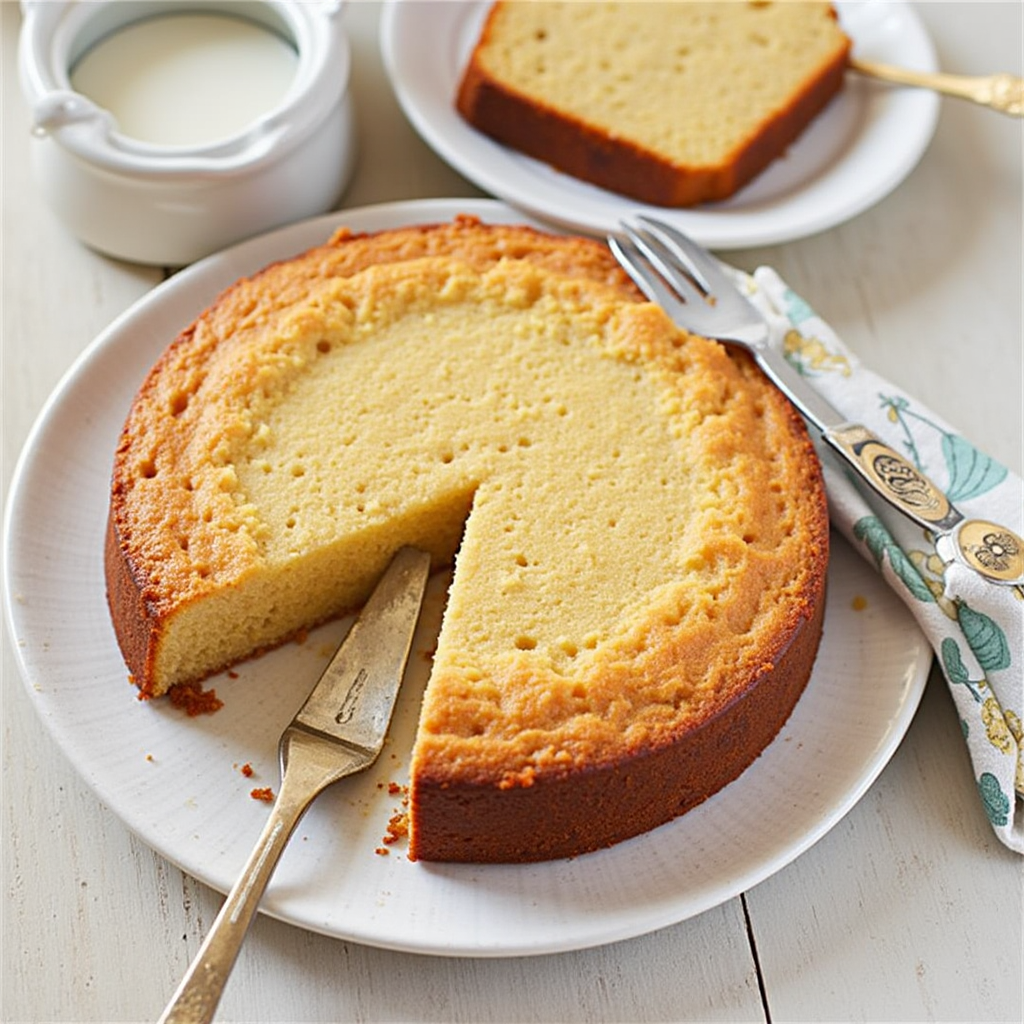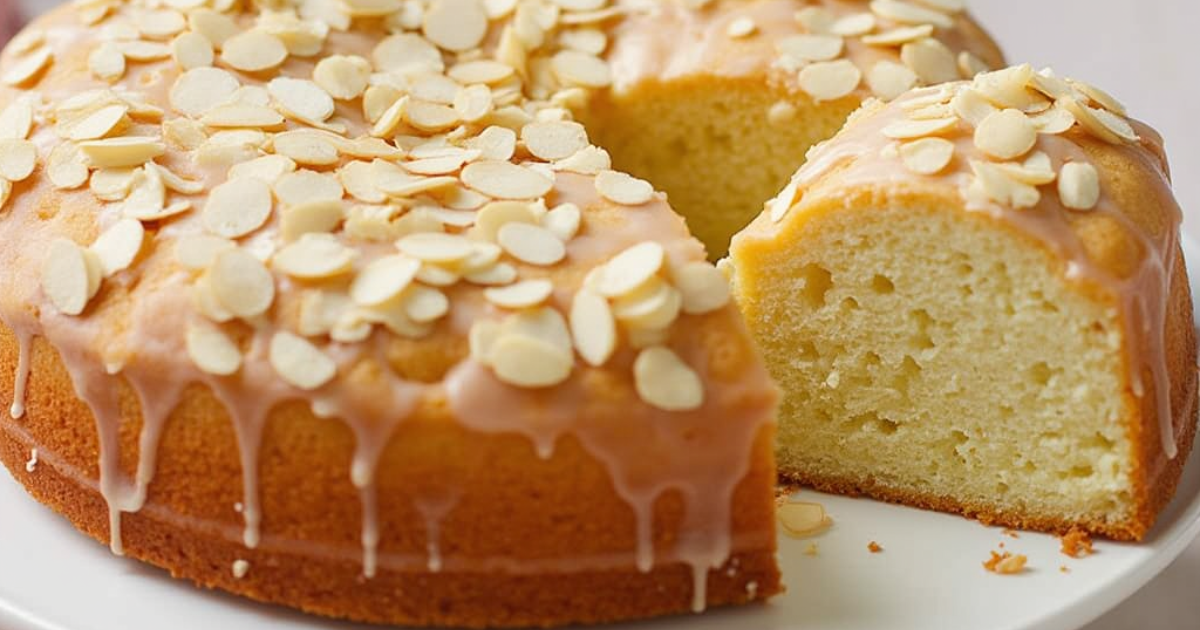Almond Cake Recipes Moist for Perfect Texture
Table of Contents
Almond Cake Recipes Moist for Perfect Texture
There’s something magical about the delicate crumb of a perfectly Almond Cake Recipes Moist. Its nutty aroma fills the kitchen as it bakes, and when you finally take that first bite, you’re met with a soft, tender texture that simply melts in your mouth. The almond flavor is subtly sweet, and the cake itself is wonderfully rich, without being overly heavy. But how do you achieve that perfect texture, the kind that has everyone asking for your recipe? In this article, you’ll discover the secrets to making moist almond cakes that not only look beautiful but taste even better.
By the time you finish reading, you’ll know the exact ingredients and techniques needed to create almond cakes with a flawless texture every time. Whether you’re an experienced baker or just starting out, the journey to creating a moist almond cake begins here.
What Makes Almond Cake Moist? Understanding the Key Ingredients
The key to a perfectly moist almond cake lies in the balance of ingredients. Each one contributes something special to the final result, from flavor to texture. Let’s take a closer look at what makes almond cake moist and how you can make sure your cake achieves that perfect, tender crumb.

Almond Flour and Ground Almonds
Almond flour and ground almonds are the heart of any almond cake. Almond flour is made from finely ground almonds, and it contains healthy fats that naturally contribute to a moist cake. Unlike regular flour, almond flour doesn’t absorb moisture the same way, which helps keep your cake soft and tender. The more finely ground the almond flour, the smoother the texture of your cake will be.
Ground almonds also play a crucial role in the texture of the cake. Their slightly coarse texture can create a rustic crumb, but in large quantities, it can make the cake dense. The trick is finding the right balance between almond flour and ground almonds.
Butter vs. Oil
When it comes to baking moist cakes, the fat you use can make a significant difference. Butter is often favored for its rich flavor, but it can sometimes lead to a slightly drier texture if overbaked. On the other hand, oil can help retain moisture for a longer period of time, keeping the cake soft even after a few days. Many almond cake recipes use a combination of both to achieve the perfect balance of flavor and moisture.
Eggs and Yogurt
Eggs contribute structure to the cake, helping it rise and hold its shape. But it’s the moisture-enhancing ingredients like yogurt or sour cream that really take the texture to the next level. These ingredients add richness and tenderness to the batter, ensuring that your almond cake remains soft and moist.
Sugar and Liquids
Sugar isn’t just for sweetness; it also helps retain moisture. When mixed with the fat in your cake, sugar holds onto water, helping the cake stay moist. Using liquid ingredients like milk or almond milk will also help ensure your cake doesn’t dry out during baking. The amount of liquid in the recipe needs to be balanced carefully, though, as too much can lead to a soggy cake.
Tips for the Perfect Moist Almond Cake
Now that you know which ingredients contribute to the moisture of your almond cake, it’s time to focus on the techniques that will help you achieve the perfect texture. These simple tips will make sure your cake turns out just the way you want it—moist, tender, and delicious.
Select the Right Almond Flour for Moisture and Flavor
When making an almond cake, always choose the best quality almond flour. You want a finely ground almond flour, as this will yield a smoother, more delicate cake. Blanched almond flour is often preferred for its lighter color and finer texture, making it perfect for light cakes.
If you use almond meal (which is made from coarser ground almonds), the texture of your cake might turn out a little denser. While almond meal can work well for certain recipes, if you’re aiming for a light and moist cake, blanched almond flour is the way to go.
The Importance of Proper Mixing Techniques
One common mistake that many bakers make is overmixing the batter. When you overmix, you incorporate too much air, which can lead to a dense cake. To prevent this, stir the ingredients only until they are fully incorporated. It’s also a good idea to fold the dry ingredients into the wet ingredients gently, ensuring that you don’t overwork the batter.
Another technique to keep in mind is the order in which you mix your ingredients. Start by creaming together your butter and sugar to incorporate air. Then, add your eggs one at a time, mixing just enough to combine. Finally, alternate between adding your dry ingredients and liquids to the batter. This method helps prevent overmixing while also ensuring that the cake stays moist.
Bake at the Right Temperature for the Best Moisture Retention
Baking your almond cake at the correct temperature is essential for achieving the perfect texture. If the oven is too hot, the cake may cook too quickly on the outside, leaving the inside undercooked and dense. On the other hand, baking at too low a temperature can cause the cake to dry out.
The optimal baking temperature for an almond cake is around 325°F (163°C). This ensures that the cake bakes slowly and evenly, allowing the moisture to be retained in the batter. Be sure to check the cake with a toothpick around the 30-minute mark to see if it’s done. It should come out clean, but with a slightly moist crumb.
Delicious Moist Almond Cake Recipes You Must Try
Now that you know the fundamentals of creating a moist almond cake, let’s dive into some delicious recipes. These almond cake recipes are simple to follow and guarantee a moist, flavorful result every time.
Classic Almond Cake with a Buttery Crumb
This is the quintessential almond cake, and it’s a must-try for anyone looking to perfect their almond cake skills. With a perfect balance of butter and almond flour, this recipe results in a cake that’s light, fluffy, and incredibly moist.
Ingredients:
| Ingredient | Quantity | Notes |
| Almond Flour | 2 cups | Blanched for best results |
| Butter (softened) | 1 cup | Room temperature |
| Eggs | 3 large | At room temperature |
| Sugar | 1 cup | Granulated or coconut sugar |
| Vanilla Extract | 1 tsp | Optional, for extra flavor |
| Baking Powder | 2 tsp | For rise |
| Milk (or Almond Milk) | 1/2 cup | For added moisture |
Instructions:
- Preheat your oven to 325°F (163°C). Grease and flour a 9-inch cake pan.
- Beat the butter and sugar together until the mixture is smooth and airy.
- Gradually add the eggs, mixing thoroughly after each one.
- Stir in the vanilla extract.
- Gradually fold in the almond flour, baking powder, and milk until just combined.
- Transfer the batter into the prepared cake pan, spreading it out evenly.
- Bake for 40-45 minutes, or until a toothpick inserted into the center comes out free of batter.
- Let the cake cool in the pan for 10 minutes before transferring it to a wire rack to cool completely.
Almond Flour and Orange Cake – A Citrusy Delight
This almond cake recipe combines the rich flavor of almonds with the zesty freshness of orange. It’s an excellent choice if you’re looking for something a little different but still incredibly moist.
Ingredients:
| Ingredient | Quantity | Notes |
| Almond Flour | 2 cups | Blanched for smooth texture |
| Eggs | 4 large | Room temperature |
| Orange Zest | 2 tbsp | Adds freshness and fragrance |
| Honey or Maple Syrup | 1/2 cup | Natural sweetener |
| Olive Oil | 1/4 cup | Adds moisture and richness |
| Baking Soda | 1 tsp | For a light rise |
Instructions:
- Preheat your oven to 350°F (177°C).Coat a round cake pan with butter or oil and line the bottom with parchment paper.
- In a large bowl, whisk the eggs, honey (or maple syrup), and olive oil together until smooth.
- Stir in the orange zest.
- Gradually mix in the almond flour and baking soda until fully combined.
- Pour the batter into the prepared cake pan and bake for 35-40 minutes, or until golden brown and a toothpick comes out clean.
- Lightly grease a round cake pan and place parchment paper on the bottom.
Moist Almond Cake Variations and Flavor Pairings
The beauty of almond cake is its versatility. You can customize it to fit different tastes and occasions. Here are some variations and flavor pairings to try.
Adding Fruits for Extra Moisture
Adding fresh fruits to your almond cake not only enhances its flavor but also adds extra moisture. You can incorporate:
- Berries: Blueberries, raspberries, or strawberries work wonderfully in almond cakes, providing bursts of sweetness and moisture.
- Apples or Pears: Adding sliced apples or pears can give your cake a tender, juicy texture while contributing to its moisture.
Enhancing Moisture with Syrups or Glazes
For an added touch of moisture and sweetness, you can drizzle your almond cake with a syrup or glaze:
- Simple Syrup: A simple syrup made from sugar and water will soak into the cake, keeping it moist and adding a slight shine.
- Honey Glaze: A honey glaze can give your cake a sweet, sticky finish while keeping it moist for longer.
Storing and Preserving Your Moist Almond Cake
After you’ve baked your perfect almond cake, you’ll want to store it properly to maintain that delightful moisture.
How to Store Almond Cake for Maximum Freshness
- Room Temperature: Store your almond cake in an airtight container at room temperature for up to 3 days.
- Freezing: If you need to store the cake for longer, wrap it tightly in plastic wrap and freeze for up to 3 months. Thaw at room temperature when ready to serve.
Tips for Reheating to Restore Moisture
- Microwave: For a quick fix, microwave individual slices for 15-20 seconds to bring back that fresh, moist texture.
- Oven: If you want to reheat the entire cake, place it in a 300°F (150°C) oven for about 10-15 minutes.
Frequently Asked Questions About Moist Almond Cake
Why Is My Almond Cake Not Moist?
If your almond cake is dry, it could be because of overbaking, using coarse almond meal, or not having enough moisture in the batter. Make sure to follow the baking time and temperature closely, and use finely ground almond flour.
Can I Make Almond Cake Without Gluten?
Yes! Almond flour is naturally gluten-free, so almond cakes are perfect for those on a gluten-free diet. Just ensure that your other ingredients, such as baking powder, are also gluten-free.
How Can I Make My Almond Cake Fluffier?
To make your almond cake fluffier, try using whipped eggs or adding an extra leavening agent like baking powder. Be sure not to overmix the batter to avoid a dense cake.
Conclusion: Bake Your Perfect Moist Almond Cake
Baking the perfect moist almond cake doesn’t have to be a challenge. By using the right ingredients, techniques, and a little bit of patience, you can create a cake that’s tender, flavorful, and full of moisture. Whether you’re baking for a special occasion or just because, a well-made almond cake is sure to impress. So collect your ingredients, heat up your oven, and begin baking! You’re only a few steps away from enjoying a slice of almond cake perfection.

